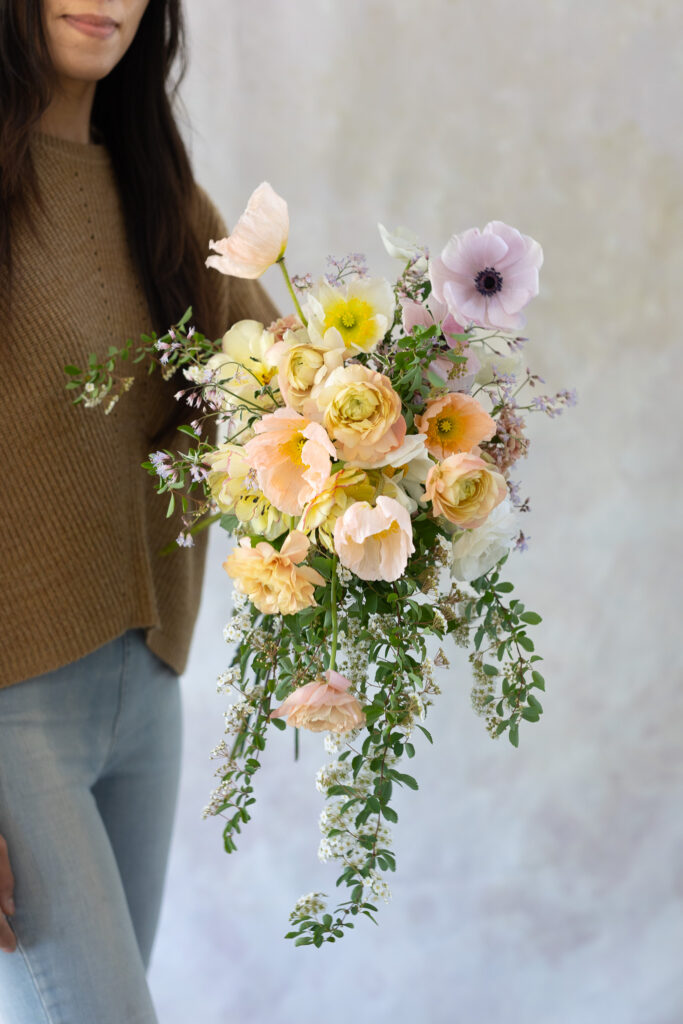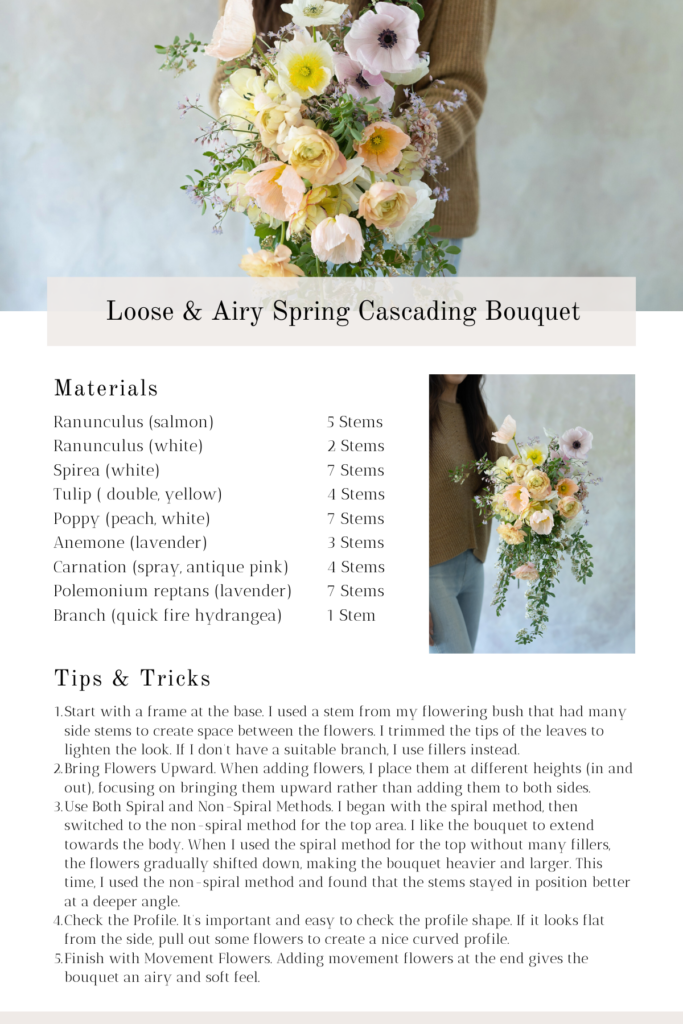About
Blog
Stemslider
Workshops
Bouquet Recipes
Shop
New mini-StemSlider: 15% off with Bundless & FREE Vase & Engraving✨
Browse around
topics
Hello Everyone!
floral designer + educator
I'm Koko
I'm floral designer, gardener and your flower bouquet coach. I'm so glad you're here. Let's enrich your bouquet skills together! Read my story
Bouquet Recipe: Loose & Airy Cascading Bouquet with Spring Flowers

Posted In
May 26, 2024
Posted On
I would love to share the bouquet recipe for a loose and airy cascading bouquet with spring flowers that I recently posted on my instagram. Because it’s May, many varieties of locally grown flowers started to be available at our local flower market ‘Connecticut Flower Collective’, and I selected Poppies, Ranunculus, Double Tulips, and Anemones!

Here’s the material list that I used, and my 5 tips how to make a loose and airy cascading bouquet.
Material
- Ranunculus (salmon) – 5 stems
- Ranunculus (white) – 2 stems
- Spirea (white) – 7 stems
- Tulip (double, yellow) – 4 stems
- Poppy (peach, white) – 7 stems
- Anemone (lavender) – 3 stems
- Carnation (spray, antique pink) – 4 stems
- Polemonium reptans (lavender) – 7 stems
- Branch (little quick fire hydrangea) – 1 stem
5 Tips to make a loose and airy cascading bouquet
1. Start with a frame at the base.
I used a stem from my flowering bush that had many side stems to create space between the flowers. I trimmed the tips of the leaves during the process to lighten the look. If I don’t have a suitable branch, I use fillers instead. Or you could make a small nest using vines like curry willows, and use it as a frame!
2. Bring Flowers Upward.
When adding flowers, I place them at different heights (in and out), focusing on bringing them upward rather than adding them to both sides. If I tried to add flowers on the sides, the cascading bouquet became wider and heavier.
3. Use Both Spiral and Non-Spiral Methods.
I began with the spiral method, then switched to the non-spiral method for the top area. I like the bouquet to extend towards the body. When I used the spiral method for the top without many fillers, the flowers gradually shifted down, making the bouquet heavier and larger.
This time, I used the non-spiral method and found that the stems stayed in position better at a deeper angle.
4. Check the Profile.
It’s important and easy to check the profile shape. During and after the bouquet-making process, I always check the profile from the both sides.
If it looks flat from the side, pull out some flowers to create a nice curved profile.
5. Finish with Movement Flowers.
Adding movement flowers at the end gives the bouquet an airy and soft feel. In this cascading bouquet, I added white Spireas and Polemonium reptans since they were blooming in my garden. For the wedding, I will use Sweetpeas or Butterfuly Ranunculus instead of Polemonium reptans as they hold up better without water.
Bouquet Recipe

Related
Pin
Share
Leave a Reply Cancel reply
Previous Story
next Story
© 2025 Koko Floral Design, LLC
Join Me on Insta
How to Effortlessly Make a Loose & Airy Cascading Bouquet
I'm so glad you're here. Let's elevate your bouquet-making skill together!